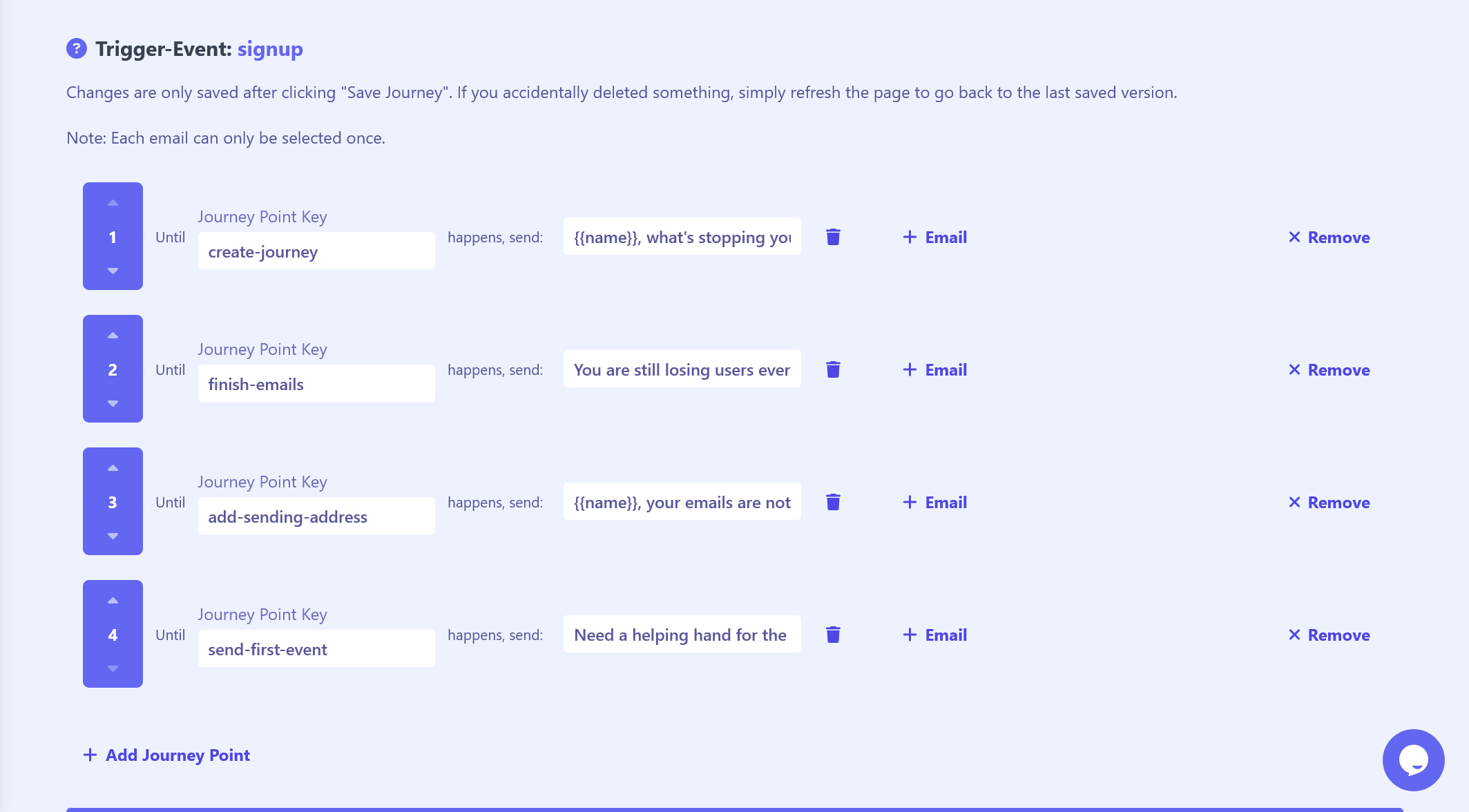The User-Journey Blog
Average SaaS Onboarding Open Rates, CTR and How to Improve
With open rates and click-through rates depending heavily on industry and when they are sent, it's hard to get a good overview of how good yours are doing. I did the research to dig up the most relevant metrics for SaaS onboarding emails:
The average open rate of SaaS onboarding emails is 68.59% for the first email. The click-through rate averages at 16.05%, making both metrics exceptionally high in relation to other email types.
Not quite at those numbers yet? Don't worry, I've compiled some helpful and actionable advice I found while researching. Implementing them will make sure you get the most impact out of your onboarding emails.
Why are the metrics so exceptionally high?
If you've done some research, you'll find that many non-onboarding type emails will get only around 15-30% open rate, depending on what type of email that is and the industry.
The 68.59% and 16.05% metrics both come from the official analysis from GetResponse (a big email sender) that they publish yearly:

So why is it that the average open rate of welcome emails is more than 200% of other the open rate of email types?
One of the biggest reasons is the sending time. Typically, onboarding and especially welcome emails are sent immediately after signup.
Recipients are engaged enough in your SaaS right now to give you their email. Of course, they'll open the emails you send them.
As time passes, the open rate of that recipient will decline. This effect can be observed for sending the first email delayed as well as for emails sent after the first onboarding email (which are delayed as well).
Different Types of Onboarding Emails
There are 3 major types of onboarding:
The first one that we all know is the email that asks you to confirm your email. This one is probably the most clicked one because we need to click in order to use the product.
The second type of onboarding email is the welcome email. It's part of the onboarding to welcome your users into the product and tell them you are there should they have any questions.
It's always good to send one, but you can (and should) combine this with the next type of email.
The last type is the educational onboarding email. It's where you help your users succeed in whatever your SaaS is solving.
Be cautious that this is not limited to technically enabling your users to use your product, but helping them with copywriting, creative inspiration and other aspects that could stop them from succeeding.
Improve overall Open Rates, Click Rates AND your 💲 Conversion Rate
Many SaaS businesses are only sending out one onboarding email. While following emails would have lower open rates, it's still a missed opportunity.
Well, what's the obvious solution? By sending more than one initial email, you can help your users succeed with your product.
Remember, not every user will convert to a paid plan. Why not at least level out the playing field by educating your users so they at least have a chance of succeeding?
On most email service providers, setting up an email sequence or drip sequence is easily done and can yield a higher conversion rate for your SaaS.
There'll be one problem though. Most emails will not be relevant to most users since they are based on fixed time delays.
How to Make ALL your emails relevant
In a normal email sequence, it's difficult to make the email relevant to each user. Some users of your SaaS won't have done anything yet, while others may have already taken the first steps in your product.
To make sure every one of your users gets only the most relevant emails (which increases open rates), you can use email sending that was specifically made for SaaS, like User-Journey (full disclosure, this is the SaaS I am building, but it's free in early access right now).
This way, you can write multiple emails for people at different stages of your product's app journey. User-Journey will then take care to track the progress of each of your users and send them the best email at the best time.
Example: Fred who has just signed up yesterday but didn't do anything will receive a different email the next day, compared to Alex who has already taken action but is stuck at a different step.

It's a game-changer when you think about how many users you are loosing because they just forgot or got stuck without knowing how to continue.
Juniper Research found out that relevant emails drive 18x more revenue than broadcast emails. Which means relevancy should be one of your top priorities when writing your onboarding sequence, no matter if you decide to use a traditional sequence or User-Journey.
Split Testing is Your Friend
Whatever advice you get, always split test it to make sure you are improving your onboarding. Observe metrics like conversion-rate based on your changes.
It's too easy to get distracted by only comparing open-rates or even click-through rates that sometimes don't really matter as much as… well, revenue.
If your email service provider doesn't have capabilities for split testing with revenue / conversions, most providers allow cloning sequences which can help set up manual split tests too.
What's a good unsubscribe rate?
You'll always encounter people that just don't want to receive onboarding communication via email.
The difficult thing is that you'll have most of the unsubscribes in your first email. If you are sending several emails, the average unsubscribe rate should be below 0.5% (otherwise you haven't reached relevancy in the content yet).
The first email averages at an unsubscribe rate of up to 3-4% which is still average. If you have more than that, you can probably work on the relevancy again.
Of course, every business is different, and every industry is different. For some, 3% might be way too much, for others 3% is a reasonable goal.
